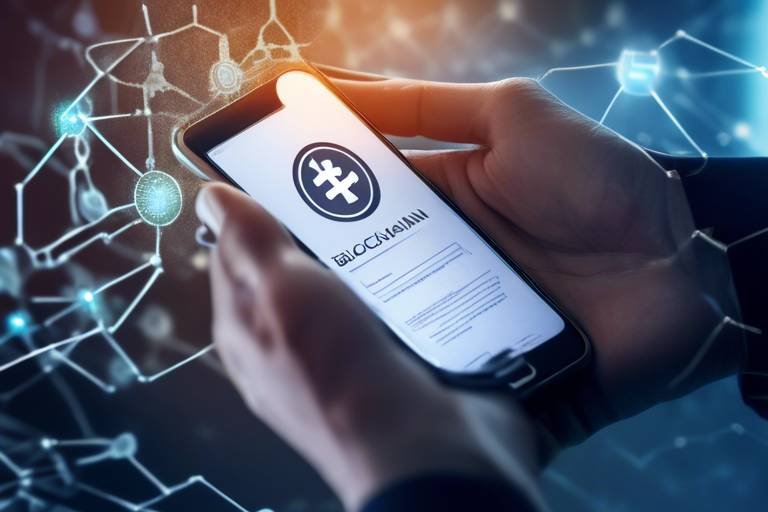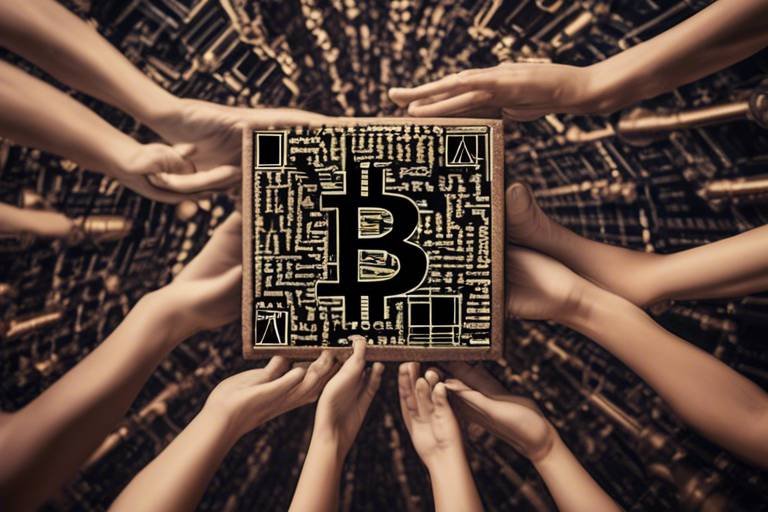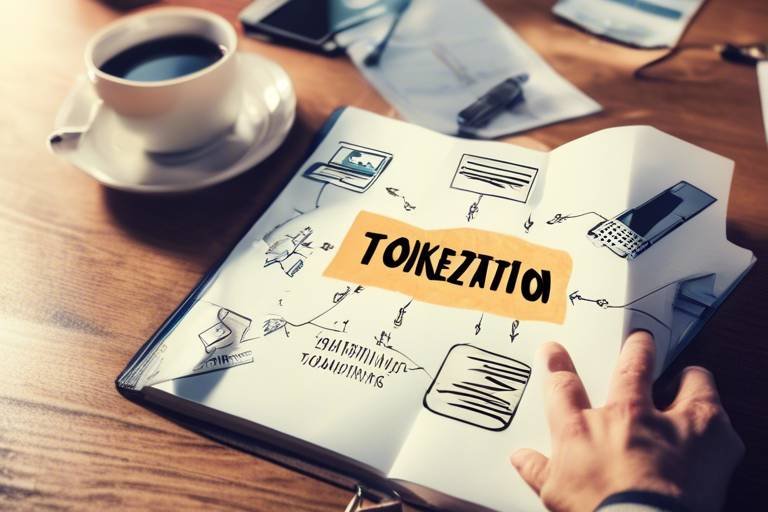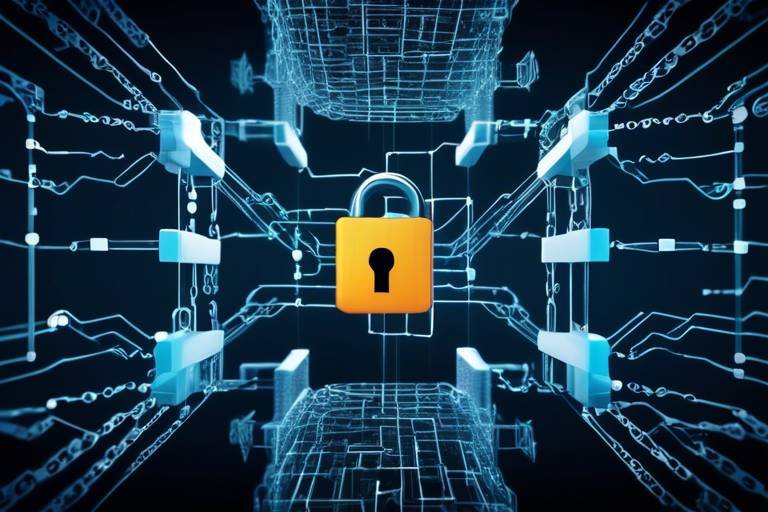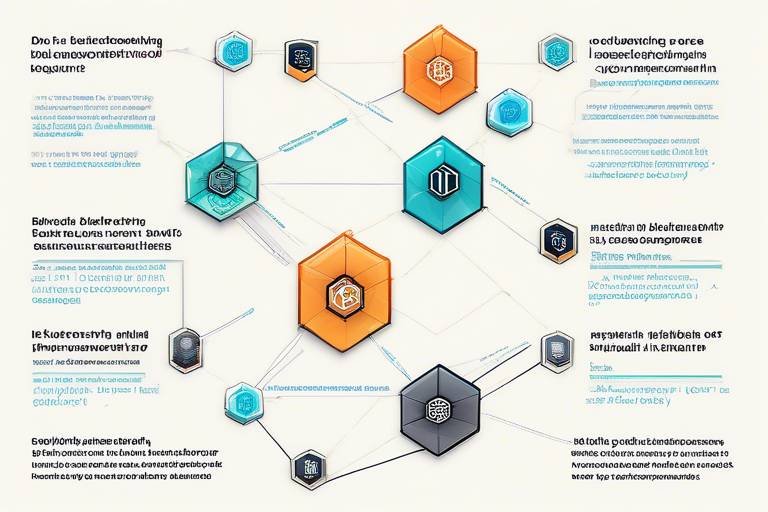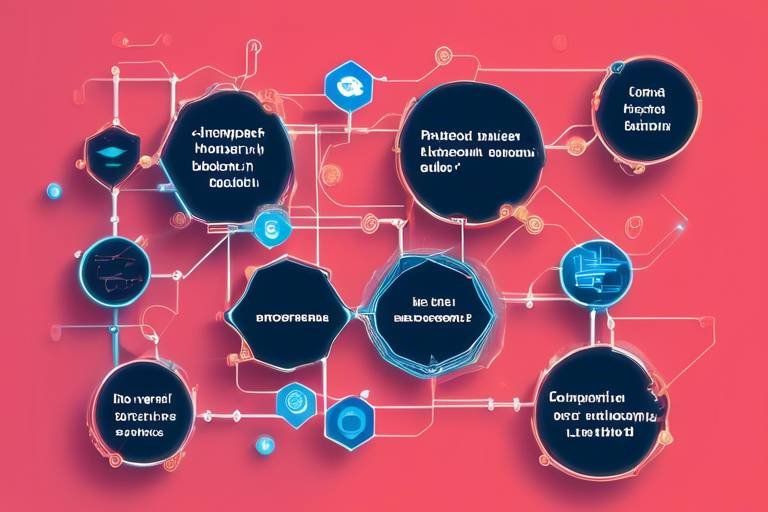The Role of Blockchain in the Internet of Things (IoT)
In today's rapidly evolving digital landscape, the integration of blockchain technology with the Internet of Things (IoT) is creating a paradigm shift in how we manage connected devices and data. Imagine a world where every device you own—from your refrigerator to your car—communicates securely and efficiently without the need for a central authority. This is not just a futuristic dream; it’s becoming a reality thanks to the unique capabilities of blockchain. By enhancing the functionality, security, and efficiency of IoT devices, blockchain is paving the way for a more decentralized and trustworthy ecosystem.
The essence of blockchain lies in its ability to provide a decentralized ledger that records transactions across multiple computers. This means that no single entity has control over the entire network, which drastically reduces the risk of fraud and data tampering. Each transaction is transparently recorded and immutable, ensuring that once data is entered, it cannot be altered without consensus from the network. This characteristic is particularly vital in IoT applications, where the integrity of data is paramount.
As we delve deeper into the benefits of integrating blockchain with IoT, it becomes clear that the advantages are not just theoretical; they have practical implications across various industries. For instance, in sectors like supply chain management and healthcare, the fusion of these technologies is revolutionizing how data is handled and shared. By creating a secure framework for devices to communicate, blockchain not only enhances security but also improves data integrity and reduces operational costs.
Moreover, the use of smart contracts—self-executing contracts with the terms of the agreement directly written into code—automates processes between IoT devices. This means that transactions can occur without the need for intermediaries, leading to faster and more efficient operations. Picture a smart home where your thermostat communicates with your energy provider to optimize energy usage based on real-time data. This is just one example of how blockchain can streamline operations in an IoT environment.
However, it’s essential to acknowledge that the integration of blockchain with IoT does not come without challenges. Issues such as scalability, energy consumption, and interoperability need to be addressed to realize the full potential of this technology. Despite these hurdles, the ongoing research and development in this field offer promising solutions that could pave the way for widespread adoption.
In conclusion, the role of blockchain in the Internet of Things is multifaceted, offering a plethora of benefits that can transform how we interact with technology. As we continue to explore this exciting intersection, it’s clear that blockchain is not just a trend; it’s a foundational technology that will redefine our connected world.
- What is blockchain?
Blockchain is a decentralized digital ledger that securely records transactions across multiple computers, ensuring transparency and security. - How does blockchain enhance IoT security?
By using cryptographic techniques, blockchain provides robust security for IoT devices, making unauthorized access extremely difficult. - What are smart contracts?
Smart contracts are self-executing contracts with the terms directly written into code, allowing for automated and secure transactions between IoT devices. - What challenges exist in integrating blockchain with IoT?
Challenges include scalability, energy consumption, and interoperability, which need to be addressed for successful implementation.

Understanding Blockchain Technology
Blockchain technology is like a digital ledger that operates without a central authority, which might sound a bit like science fiction, but it’s very much a reality. Imagine a book that everyone can read and write in, but once something is written, it can never be erased. That’s the essence of blockchain! Each entry, or block, is linked to the previous one, creating a chain of data that is incredibly secure and transparent. This transparency is one of its biggest selling points—everyone involved can see the same information, which drastically reduces the chances of fraud or manipulation.
At its core, blockchain is built on three fundamental principles: transparency, immutability, and security. Let’s break these down a bit:
- Transparency: Since every participant in the network has access to the complete ledger, it fosters an environment of trust. You know exactly what’s happening, and there’s no room for shady business.
- Immutability: Once a transaction is recorded on the blockchain, it’s nearly impossible to alter. This is akin to carving your name into stone; it’s there for good! This feature is crucial for applications where data integrity is paramount.
- Security: Blockchain employs advanced cryptographic techniques to secure data. This means that even if someone tries to tamper with the data, they would need to alter every subsequent block in the chain, which is practically impossible in a well-distributed network.
So, how does all this tie into the Internet of Things (IoT)? Well, IoT devices generate an enormous amount of data, and with that comes the challenge of keeping that data secure and trustworthy. By integrating blockchain into IoT, we can ensure that the data being transmitted between devices is not only secure but also verifiable. Think of it as adding a robust lock to your digital mailbox—only authorized users can access it, and you can always check who has been in and out.
Let’s consider an example: imagine a smart thermostat that communicates with your energy provider. With blockchain, every interaction between your thermostat and the energy provider can be securely recorded. This means you can trust that the data being sent is accurate, and it can’t be tampered with. Such integration not only enhances security but also boosts efficiency by reducing the chances of errors or fraud.
In summary, understanding blockchain technology is crucial for grasping its potential impact on the IoT landscape. By leveraging its core features—transparency, immutability, and security—we can create a more trustworthy and efficient ecosystem for connected devices. As we delve deeper into the benefits of this integration, it’s essential to keep these principles in mind, as they form the backbone of a new era in technology.
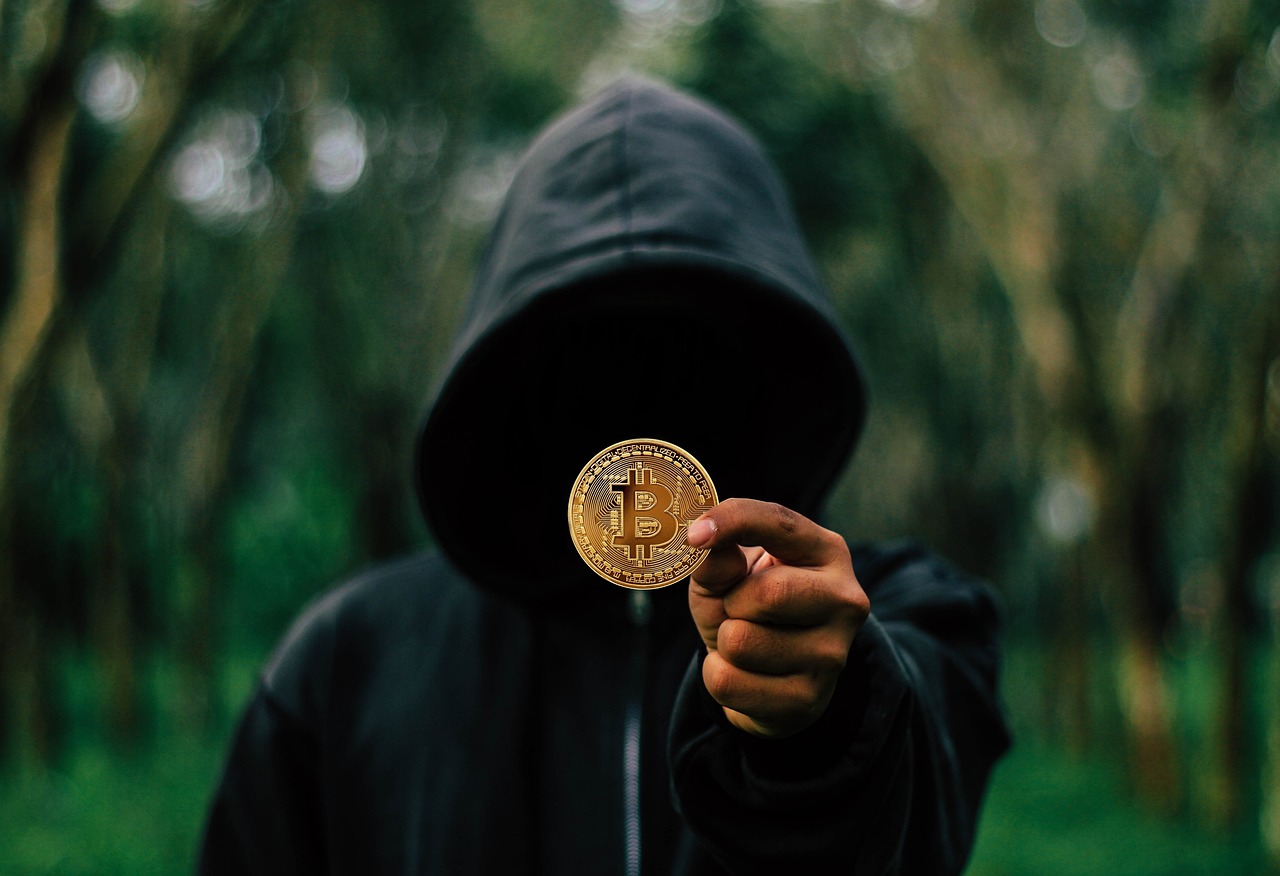
Benefits of Integrating Blockchain with IoT
Integrating blockchain technology with the Internet of Things (IoT) is like adding a turbocharger to a regular engine; it enhances performance and efficiency dramatically. The combination of these two groundbreaking technologies creates a synergy that is not just beneficial but revolutionary. Imagine a world where devices communicate securely and autonomously without the fear of data breaches or unauthorized access. This is the promise of blockchain in IoT, and it comes with a plethora of advantages that transform how industries operate.
One of the most significant benefits is enhanced security. With IoT devices being notoriously vulnerable to hacking, the cryptographic techniques employed by blockchain provide an additional layer of protection. Each transaction or communication between devices is recorded in a decentralized ledger, making it nearly impossible for malicious actors to alter or manipulate the data. This robust security framework ensures that sensitive information, such as personal health data or financial transactions, remains confidential and secure.
Moreover, integrating blockchain with IoT improves data integrity. In traditional systems, data can be altered or corrupted, leading to inaccuracies that can have severe consequences. However, with blockchain, once data is recorded, it becomes immutable. This means that any information shared between devices is trustworthy and can be verified by all parties involved. For instance, in supply chain management, blockchain ensures that every step of the process is documented, reducing the chances of fraud and enhancing accountability.
Another compelling advantage is the potential for cost reduction. By eliminating intermediaries and automating processes through smart contracts, businesses can significantly lower operational costs. Smart contracts automatically execute transactions when specific conditions are met, streamlining workflows and reducing the need for human intervention. This not only speeds up processes but also minimizes the chances of errors, leading to increased efficiency. For example, in logistics, a smart contract could automatically trigger payments once goods are delivered, simplifying the entire transaction process.
Additionally, the decentralization aspect of blockchain fosters a more trustworthy environment for IoT applications. In traditional models, a central authority often controls data and transactions, which can lead to a single point of failure. However, blockchain's distributed nature means that no single entity has control over the entire network. This decentralization builds trust among users, as they can independently verify transactions without relying on a third party. In a world where trust is paramount, this feature is invaluable.
Furthermore, the integration of blockchain with IoT opens up new avenues for interoperability. Different IoT devices often operate on various platforms, leading to challenges in communication and data sharing. Blockchain can serve as a common language, allowing disparate devices to interact seamlessly. This interoperability not only enhances the user experience but also expands the potential applications of IoT technology across various sectors.
In summary, the benefits of integrating blockchain with IoT are profound and multifaceted. From enhanced security and data integrity to cost reduction and improved trust, the combination of these technologies is set to revolutionize industries. As we continue to explore the possibilities, it’s clear that the future of connected devices is brighter with blockchain at the helm.
- What is the main advantage of using blockchain in IoT? The primary advantage is enhanced security, as blockchain provides a decentralized and tamper-proof way to record transactions.
- How do smart contracts work in IoT? Smart contracts automate processes between IoT devices, executing transactions based on predefined conditions without the need for intermediaries.
- Can blockchain improve data integrity in IoT? Yes, blockchain ensures that once data is recorded, it cannot be altered, thereby maintaining its integrity and trustworthiness.
- What challenges exist in integrating blockchain with IoT? Challenges include scalability, energy consumption, and interoperability between different IoT devices.
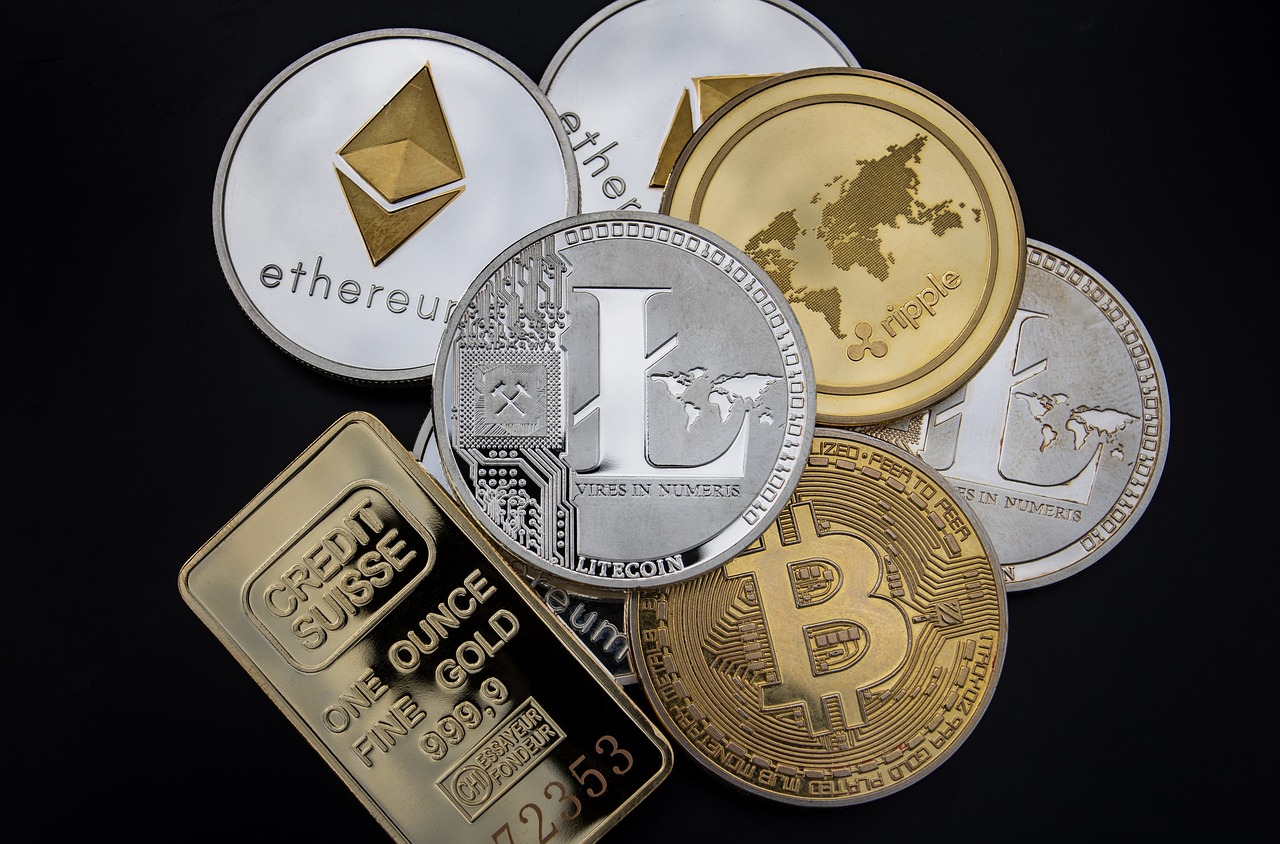
Enhanced Security Features
In today's digital landscape, where data breaches and cyber threats are rampant, the need for robust security measures is more crucial than ever. This is where blockchain technology steps in, offering enhanced security features that are particularly beneficial for Internet of Things (IoT) devices. Imagine a world where every device connected to the internet operates under a shield of invulnerability. With blockchain, that vision is becoming a reality.
At its core, blockchain employs cryptographic techniques that ensure data integrity and confidentiality. Each transaction or piece of data recorded on the blockchain is encrypted and linked to the previous transaction, creating a chain that is nearly impossible to alter. This immutability is a game-changer for IoT devices, which often process sensitive information. By using blockchain, organizations can significantly reduce the risk of unauthorized access and data tampering.
Furthermore, the decentralized nature of blockchain means that there is no single point of failure. Traditional IoT systems often rely on centralized servers, making them vulnerable to attacks. In contrast, blockchain distributes data across a network of computers, or nodes, which enhances security. If one node is compromised, the others remain unaffected, thereby safeguarding the entire system. This decentralization not only mitigates risks but also fosters a trustworthy environment for users.
To illustrate the security advantages of blockchain in IoT, consider the following key features:
- Data Encryption: All data transmitted between IoT devices is encrypted, ensuring that only authorized parties can access it.
- Authentication: Blockchain enables robust authentication mechanisms, verifying the identity of devices before they can communicate.
- Audit Trails: Every transaction on the blockchain is recorded in a transparent and traceable manner, providing a complete audit trail that can be invaluable in case of disputes or investigations.
These features collectively create a fortified environment for IoT devices, where security is not just an afterthought but a foundational element. As the number of connected devices continues to grow exponentially, the integration of blockchain technology into IoT systems will become increasingly vital. By leveraging blockchain, organizations can not only protect their data but also enhance user confidence in their IoT solutions.
In conclusion, the enhanced security features provided by blockchain technology are transforming the way we think about IoT security. With its cryptographic techniques, decentralized architecture, and comprehensive authentication processes, blockchain is paving the way for a more secure future in the IoT landscape. As we continue to navigate the complexities of the digital age, embracing these innovations will be essential for safeguarding our connected world.
- What is blockchain technology? Blockchain is a decentralized ledger that securely records transactions across multiple computers, ensuring transparency and immutability.
- How does blockchain enhance IoT security? By using cryptographic techniques, decentralization, and authentication processes, blockchain significantly reduces the risk of unauthorized access and data breaches in IoT systems.
- Are there any challenges in implementing blockchain in IoT? Yes, challenges such as scalability, energy consumption, and interoperability exist, but ongoing research and development aim to address these issues.
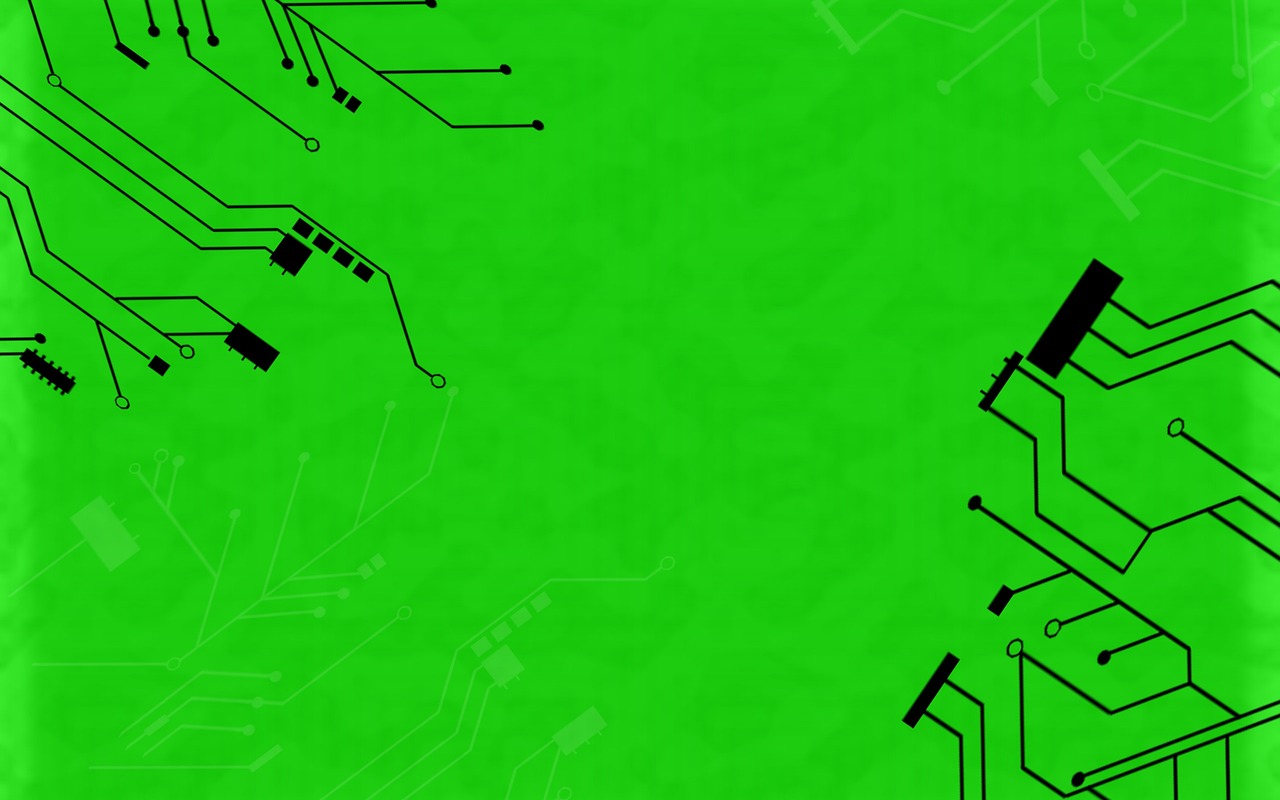
Decentralization and Trust
When we talk about decentralization, we’re diving into a concept that fundamentally shifts how we think about control and authority. Imagine a world where no single entity holds the keys to your data, where trust is built not on faith but on transparency and verifiable actions. That’s the beauty of blockchain technology in the context of the Internet of Things (IoT). By distributing data across a network of computers, blockchain eliminates the need for a central authority, which can often become a bottleneck or a target for malicious attacks.
This decentralized approach fosters a new level of trust among users. In traditional systems, you often have to rely on a central authority to manage and verify transactions. But with blockchain, every transaction is recorded across multiple nodes, making it incredibly difficult to tamper with the data. This creates a shared, immutable record that users can trust without needing to know or rely on each other. Think of it as a community garden; everyone contributes, and everyone can see what’s happening, ensuring that no one person can take more than their fair share.
Moreover, the decentralized nature of blockchain allows for greater resilience against failures or attacks. If one node goes down, the rest of the network continues to function. This is particularly crucial for IoT devices, which often operate in environments where connectivity can be spotty or where devices are vulnerable to hacking attempts. By distributing the data and decision-making processes, we create a more robust system that can withstand challenges.
However, it’s important to highlight that decentralization doesn’t mean chaos. Instead, it creates a structured environment where trust is built through collaboration and shared responsibility. In a decentralized IoT ecosystem, devices can communicate and transact directly with each other without going through a central authority. This not only speeds up processes but also reduces costs, as it eliminates the need for intermediaries who often add friction to transactions.
To illustrate this point, let’s consider a few key benefits of decentralization in IoT:
- Enhanced Security: With no single point of failure, the risk of hacking is significantly reduced.
- Increased Transparency: Every transaction is recorded and visible to all participants, fostering accountability.
- Improved Efficiency: Direct communication between devices can lead to faster transactions and reduced operational costs.
In summary, decentralization in the IoT space not only enhances security and efficiency but also builds a foundation of trust among users. As we move towards a more connected world, embracing these principles will be essential for creating a trustworthy ecosystem where devices can operate autonomously and securely. The implications of this shift are profound, paving the way for innovations that could reshape industries and improve our daily lives.
Q: What is decentralization in the context of blockchain?
A: Decentralization refers to the distribution of data and control across a network, eliminating the need for a central authority. This enhances security and builds trust among users.
Q: How does blockchain enhance trust in IoT?
A: By providing a transparent and immutable record of transactions, blockchain allows users to verify actions without relying on a central authority, fostering trust in the ecosystem.
Q: What are some challenges of decentralization in IoT?
A: While decentralization offers many benefits, challenges include scalability, energy consumption, and interoperability among different devices and networks.
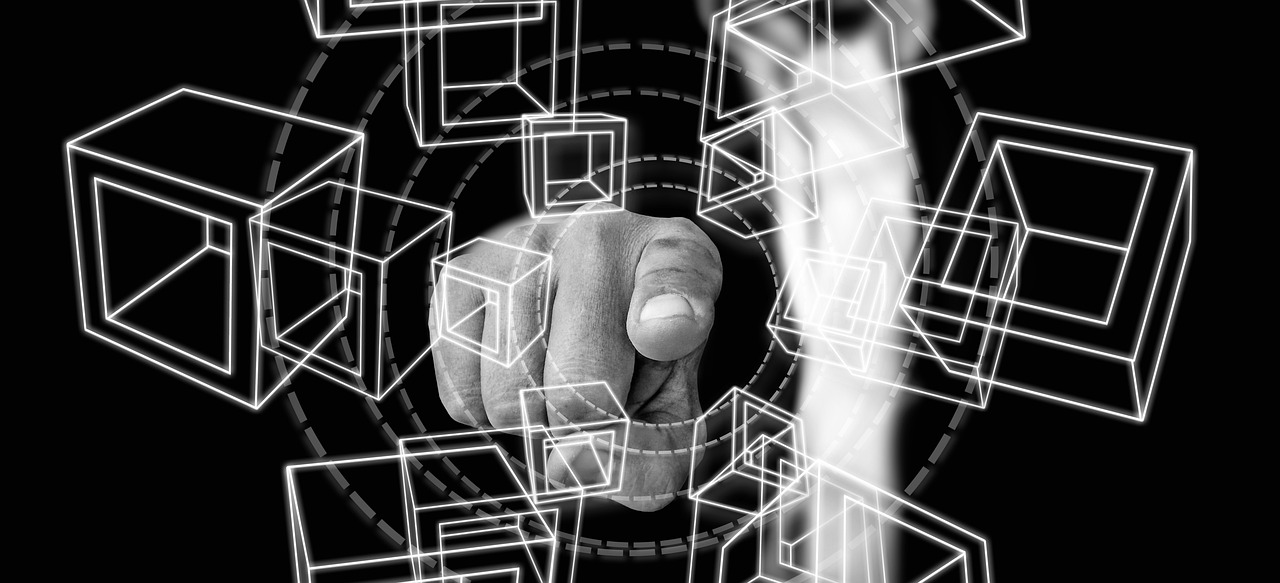
Smart Contracts in IoT
Smart contracts are revolutionizing the way IoT devices interact and communicate with one another. Imagine a world where your refrigerator can automatically order groceries when you're running low, or your thermostat adjusts based on your preferences without you lifting a finger. This is the magic of smart contracts in the Internet of Things (IoT). These self-executing contracts, with the terms directly written into code, facilitate automated transactions and processes between devices, ensuring that everything operates smoothly without human intervention.
One of the most compelling features of smart contracts is their ability to enhance efficiency. By eliminating the need for intermediaries, such as brokers or payment processors, these contracts allow devices to interact directly. For instance, in a smart home, your thermostat could communicate with your energy provider to optimize energy usage based on real-time pricing and demand. This not only saves money but also contributes to a more sustainable energy model.
Moreover, smart contracts are built on blockchain technology, which means they inherit its fundamental principles of security and transparency. Each transaction is recorded on the blockchain, making it immutable and easily auditable. This feature is particularly important in industries like healthcare, where patient data must be handled with the utmost care. By using smart contracts, healthcare IoT devices can securely share patient information among authorized parties, ensuring that data integrity is maintained while also streamlining processes.
However, it’s essential to understand that implementing smart contracts in IoT is not without its challenges. The complexity of coding these contracts can lead to vulnerabilities if not done correctly. Furthermore, the interoperability between different devices and platforms can pose significant hurdles. As the IoT ecosystem grows, ensuring that smart contracts can operate seamlessly across various networks will be crucial for widespread adoption.
To illustrate the impact of smart contracts in IoT, consider the following table that highlights a few key applications:
| Application | Description | Benefits |
|---|---|---|
| Smart Homes | Automated control of home devices like lights, heating, and security systems. | Increased convenience and energy efficiency. |
| Healthcare | Secure sharing of patient data between devices and healthcare providers. | Improved patient care and data integrity. |
| Supply Chain | Automated tracking of goods and verification of transactions. | Enhanced transparency and reduced fraud. |
In conclusion, smart contracts are not just a buzzword; they represent a significant leap forward in how IoT devices can operate autonomously and securely. As we continue to explore the potential of this technology, it becomes clear that the integration of smart contracts in IoT can lead to a more efficient, transparent, and secure future. The possibilities are endless, and the journey has only just begun!
- What is a smart contract? A smart contract is a self-executing contract with the terms of the agreement directly written into code.
- How do smart contracts enhance IoT? They automate processes between devices, allowing for secure and efficient transactions without intermediaries.
- What are the challenges of implementing smart contracts in IoT? Key challenges include coding complexity, security vulnerabilities, and interoperability between different devices and platforms.

Challenges of Implementing Blockchain in IoT
Integrating blockchain technology into the Internet of Things (IoT) ecosystem is not without its hurdles. While the benefits are compelling, the challenges can be daunting. One of the most significant issues is scalability. As the number of connected devices increases exponentially, the blockchain must be able to handle a vast amount of transactions without compromising speed or performance. The current architectures of many blockchain systems may struggle to keep up with the rapid data flow from millions of IoT devices.
Another challenge is energy consumption. Traditional blockchain networks, especially those that rely on proof-of-work mechanisms, can be extremely energy-intensive. This is particularly concerning for IoT devices, many of which are designed to be energy-efficient. If blockchain technology requires excessive energy, it could negate the benefits of using IoT in the first place.
Additionally, interoperability poses a significant challenge. With numerous blockchain platforms available, ensuring that different systems can communicate effectively is crucial. If IoT devices are unable to share data across various blockchain networks, it could lead to fragmentation and inefficiency. Achieving seamless integration between diverse systems is essential for realizing the full potential of blockchain in IoT.
To address these challenges, several potential solutions are being explored:
- Layer 2 Solutions: Implementing secondary layers on top of existing blockchains can help improve scalability without altering the core protocol.
- Energy-efficient Protocols: Developing and adopting less energy-intensive consensus mechanisms, like proof-of-stake, can significantly reduce the energy footprint.
- Standardization: Creating industry standards for blockchain interoperability can pave the way for smoother communication between different platforms.
In conclusion, while the integration of blockchain into IoT presents several challenges, ongoing research and development are paving the way for innovative solutions. Addressing these obstacles is crucial for unlocking the full potential of a decentralized and secure IoT ecosystem.
Q1: What is the biggest challenge when integrating blockchain with IoT?
A1: Scalability is often considered the biggest challenge, as blockchain must handle a massive volume of transactions from numerous IoT devices efficiently.
Q2: How does energy consumption affect IoT devices using blockchain?
A2: Many traditional blockchain systems consume a lot of energy, which can be counterproductive for IoT devices that are designed to be energy-efficient.
Q3: Why is interoperability important in blockchain and IoT?
A3: Interoperability ensures that different blockchain systems can communicate and share data effectively, preventing fragmentation and enhancing efficiency.
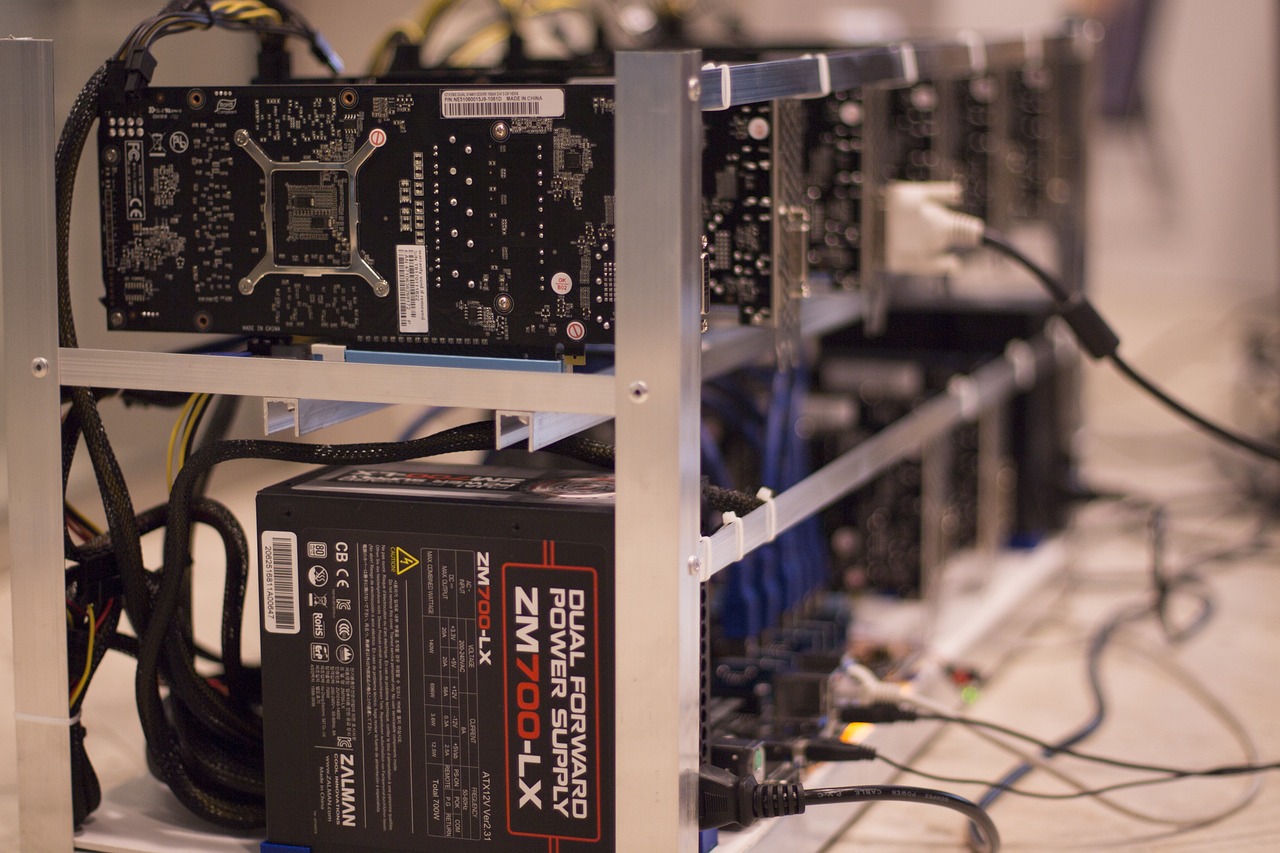
Use Cases of Blockchain in IoT
The integration of blockchain technology with the Internet of Things (IoT) is not just a theoretical concept; it is actively transforming various industries by enhancing security, efficiency, and transparency. A multitude of real-world applications showcases how organizations are leveraging this synergy to solve complex challenges. Let's dive into some of the most compelling use cases that highlight the potential of blockchain in the IoT landscape.
One of the most notable areas where blockchain is making waves is in Supply Chain Management. Traditionally, supply chains have been plagued by issues like fraud, lack of transparency, and inefficiencies. By utilizing blockchain, companies can create an immutable record of transactions that enhances traceability and accountability. Each step in the supply chain—from manufacturing to delivery—can be recorded on the blockchain, allowing stakeholders to verify the authenticity of products. For instance, if a batch of food products is recalled due to contamination, blockchain can quickly identify the source and track the affected items, thereby minimizing health risks and financial losses.
In the realm of Healthcare Applications, the combination of IoT devices and blockchain is revolutionizing patient data management. With the rise of wearable health monitors and smart medical devices, the volume of sensitive health data generated is immense. Blockchain offers a secure and decentralized method for storing this data, ensuring that only authorized personnel can access it. This not only protects patient privacy but also facilitates seamless sharing of medical records among healthcare providers. Imagine a scenario where a patient visits a new doctor; with blockchain, their entire medical history can be accessed instantly and securely, improving the quality of care.
Furthermore, the energy sector is also experiencing a transformation through the integration of blockchain and IoT. Smart grids equipped with IoT sensors can monitor energy consumption in real-time. By using blockchain, energy transactions between consumers and producers can be automated and secured through smart contracts. This decentralized approach allows for peer-to-peer energy trading, where individuals can sell excess energy generated from their solar panels directly to their neighbors, promoting sustainability and reducing reliance on traditional energy providers.
To illustrate the diverse applications of blockchain in IoT, consider the following table that summarizes key use cases across different sectors:
| Industry | Use Case | Benefits |
|---|---|---|
| Supply Chain | Product Traceability | Enhanced transparency, reduced fraud |
| Healthcare | Secure Patient Data | Improved data management, patient privacy |
| Energy | Peer-to-Peer Energy Trading | Increased efficiency, sustainability |
| Manufacturing | Quality Control | Real-time monitoring, reduced downtime |
In addition to these examples, sectors like automotive and smart cities are also exploring blockchain for applications such as vehicle identity verification and efficient traffic management. The possibilities are virtually endless, and as technology continues to evolve, we can expect to see even more innovative use cases emerge.
- What is the main advantage of using blockchain in IoT?
The primary advantage is enhanced security and transparency, which helps to build trust among users and stakeholders. - Can blockchain solve all IoT security issues?
While blockchain significantly improves security, it is not a silver bullet and should be part of a broader security strategy. - Are there any limitations to using blockchain in IoT?
Yes, challenges such as scalability, energy consumption, and interoperability need to be addressed for successful implementation.

Supply Chain Management
In today's fast-paced world, transparency and efficiency in supply chains are more critical than ever. Blockchain technology is revolutionizing supply chain management by providing an unalterable record of transactions that enhances both accountability and traceability. Imagine a scenario where every step of a product's journey—from the raw material supplier to the end consumer—is documented on a decentralized ledger. This means that every party involved can access real-time data about the product's status, ensuring that everyone is on the same page.
One of the most significant benefits of using blockchain in supply chain management is its ability to reduce fraud. By creating a transparent record of each transaction, companies can easily verify the authenticity of products. For instance, if a batch of goods is reported as spoiled or counterfeit, blockchain can trace back the entire supply chain to identify where the problem originated. This not only protects consumers but also helps businesses maintain their reputation and trustworthiness.
Moreover, the integration of blockchain can significantly streamline the process of auditing and compliance. Traditionally, audits can be time-consuming and prone to human error. However, with blockchain, auditors can access a complete and accurate history of transactions at any time, making the auditing process more efficient. This not only saves time but also reduces operational costs associated with compliance.
Another exciting aspect of blockchain in supply chain management is its potential to enhance collaboration among various stakeholders. By utilizing a shared ledger, suppliers, manufacturers, and retailers can work together more effectively. Each party can update the status of their goods in real time, facilitating better communication and reducing delays. For example, if a shipment is delayed, all parties involved can instantly see the update and adjust their operations accordingly, minimizing disruptions.
| Benefit | Description |
|---|---|
| Transparency | All transactions are recorded on a public ledger, allowing for real-time tracking of goods. |
| Fraud Reduction | Immutable records help verify the authenticity of products and reduce the risk of counterfeiting. |
| Efficiency | Streamlined auditing processes save time and reduce operational costs. |
| Collaboration | Shared ledgers improve communication and coordination among stakeholders. |
In conclusion, the intersection of blockchain technology and supply chain management is a game-changer. It not only enhances the security and integrity of transactions but also fosters a culture of collaboration and trust among all parties involved. As more companies recognize the value of blockchain, we can expect to see a shift towards more transparent and efficient supply chains, ultimately benefiting consumers and businesses alike.
- How does blockchain improve supply chain transparency?
Blockchain provides a shared, immutable ledger that allows all parties to track the movement of goods in real time, ensuring transparency throughout the supply chain.
- Can blockchain help reduce supply chain fraud?
Yes, by creating a secure record of transactions, blockchain makes it difficult for counterfeit products to enter the supply chain, thereby reducing fraud.
- What industries can benefit from blockchain in supply chain management?
Industries such as food and beverage, pharmaceuticals, and electronics can greatly benefit from the transparency and traceability provided by blockchain technology.

Healthcare Applications
In today's fast-paced world, the healthcare industry is undergoing a significant transformation, and at the heart of this revolution is the integration of blockchain technology with the Internet of Things (IoT). Imagine a scenario where your health data is not just stored but secured, verified, and easily accessible to authorized professionals without the risk of tampering. This is where blockchain shines, providing a robust framework for managing sensitive health information.
One of the most compelling applications of blockchain in healthcare is its ability to enhance data security. With the rise of IoT devices—think wearable fitness trackers, smart medical devices, and remote health monitoring systems—the volume of data generated is staggering. However, this data is often vulnerable to breaches and unauthorized access. Blockchain addresses these concerns by employing cryptographic techniques that ensure only authorized users can access sensitive information, thereby protecting patient privacy and integrity.
Moreover, the integration of blockchain allows for seamless interoperability among various IoT devices used in healthcare settings. For instance, consider a patient's journey from a fitness tracker that monitors their heart rate to a smart pill dispenser that ensures they take their medication on time. Each device can communicate and share information securely through a blockchain network, creating a comprehensive health record that is both accurate and up-to-date.
Another significant benefit is the streamlining of processes. In a traditional healthcare system, managing patient records can be cumbersome and time-consuming. However, with blockchain, healthcare providers can automate many of these processes using smart contracts. These self-executing contracts can facilitate tasks such as patient consent, insurance claims processing, and even billing, significantly reducing administrative overhead and enhancing operational efficiency.
Real-world examples of blockchain applications in healthcare are already emerging. For instance, companies are utilizing blockchain to create a secure and transparent system for managing patient records. This not only improves data management but also fosters trust among patients and healthcare providers. By allowing patients to have control over their data, they can choose who accesses their information, thereby enhancing their overall healthcare experience.
To further illustrate the impact of blockchain in healthcare, here’s a brief overview of its advantages:
| Advantage | Description |
|---|---|
| Data Integrity | Ensures that patient data is accurate and unaltered. |
| Enhanced Security | Protects sensitive health information from unauthorized access. |
| Improved Efficiency | Automates administrative tasks, reducing time and costs. |
| Patient Empowerment | Gives patients control over their health data. |
In conclusion, the fusion of blockchain technology with IoT in healthcare is not just a futuristic concept; it is a present-day reality that is reshaping how we think about health data management. As we continue to explore this intersection, we can expect to see even more innovative solutions that prioritize patient privacy, enhance data security, and ultimately lead to better health outcomes.
- What is blockchain technology? Blockchain is a decentralized ledger that records transactions securely across multiple computers, ensuring transparency and immutability.
- How does blockchain enhance IoT security? Blockchain uses cryptographic techniques to secure data, making it difficult for unauthorized users to access sensitive information.
- Can blockchain improve patient care? Yes, by ensuring secure data management and enabling seamless communication between devices, blockchain can enhance patient care.
- What are smart contracts? Smart contracts are self-executing contracts with the terms of the agreement directly written into code, automating processes between IoT devices.
Frequently Asked Questions
- What is blockchain technology?
Blockchain technology is a decentralized digital ledger that records transactions across multiple computers. It ensures that the information is transparent, immutable, and secure, making it a powerful tool for various applications, especially in the Internet of Things (IoT).
- How does blockchain enhance IoT security?
Blockchain enhances IoT security through its cryptographic techniques, which protect sensitive data from unauthorized access. This makes it significantly harder for hackers to compromise IoT devices and the data they generate.
- What are smart contracts in the context of IoT?
Smart contracts are self-executing contracts with the terms of the agreement directly written into code. In IoT, they enable automated processes between devices, ensuring secure and efficient transactions without the need for intermediaries.
- What are the benefits of integrating blockchain with IoT?
Integrating blockchain with IoT offers numerous benefits, including enhanced security, improved data integrity, and reduced operational costs. These advantages can transform how industries manage connected devices and data.
- What challenges does blockchain face when used with IoT?
Some challenges of implementing blockchain in IoT include scalability issues, high energy consumption, and interoperability between different systems. Addressing these challenges is crucial for successful integration.
- Can you provide examples of blockchain use cases in IoT?
Absolutely! Blockchain is being used in various industries such as supply chain management for enhanced transparency and traceability, and in healthcare for securing patient data and streamlining processes, demonstrating its versatility and effectiveness.
- How does decentralization impact trust in IoT?
Decentralization eliminates the need for a central authority, which fosters trust among users. By distributing control across a network, blockchain enhances the trustworthiness of IoT ecosystems, making them more reliable and secure.





